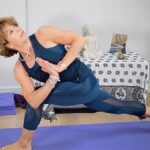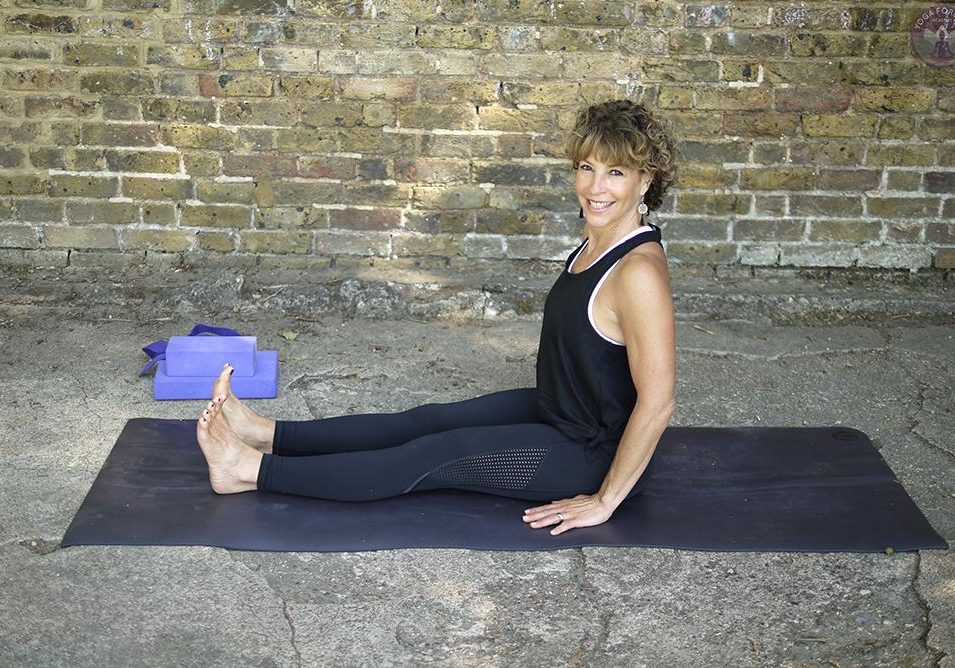
Winter warming practice
A winter warming yoga practice to ensure you move your body correctly and maintain healthy fascia. By Fenella Lindsell
Yoga is for everyone — it’s versatile, adaptable and suitable for all age groups. You don’t need to be naturally flexible, and most people don’t fit that category anyway, which is why yoga is such a good friend to take onwards in life! That’s especially true during the cold, dark days of winter.
Here is a winter warming sequence to unwind and unravel our bodies, which are alarmingly accustomed to not moving as they should. It includes forward and backward bends, lateral stretches and twists which help muscles, joints, tendons and ligaments to work properly. The sequence also keeps the connective tissue well oiled, which is critical for holding us all in one piece. Connective tissue provides support, connection and separation in the body.
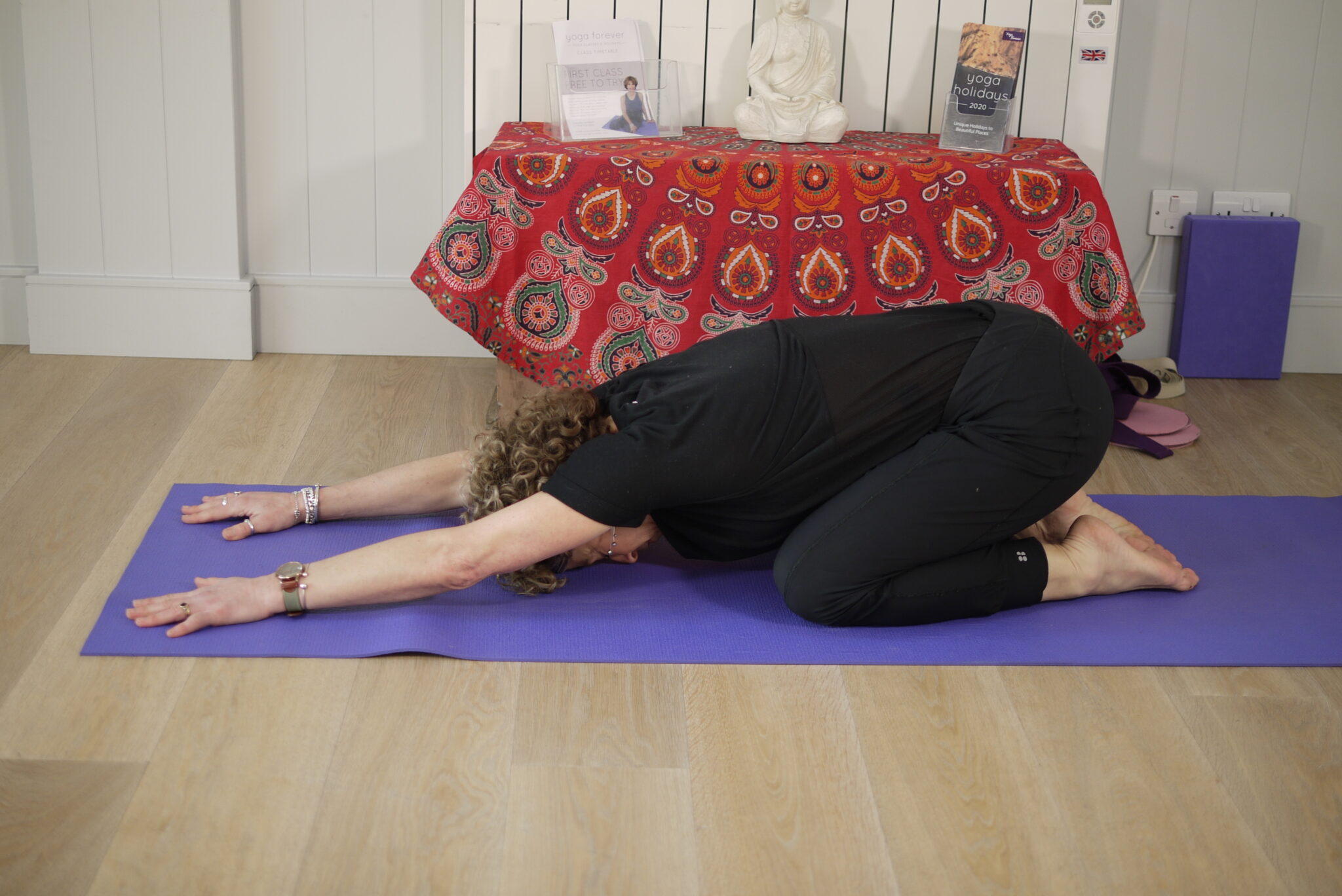
Extended Child Pose (Adho Muka Virasana
The pose: Kneel with big toes touching and toes uncurled, knees are hip-width apart. If it’s difficult to sit back on your heels, place a cushion between your seat and your feet. Rest your body between your thighs and create length through your spine. You can rest your head on a pillow if you struggle to bring your forehead to the floor. Rest in this restorative pose for 1-3 minutes. Let go of what might lie ahead or what has been and try and connect with the breath, breathing in for the count of four and out for the count of six.
The benefits: Relieves lower back and neck pain, quietens the mind and reduces feelings of stress and fatigue.
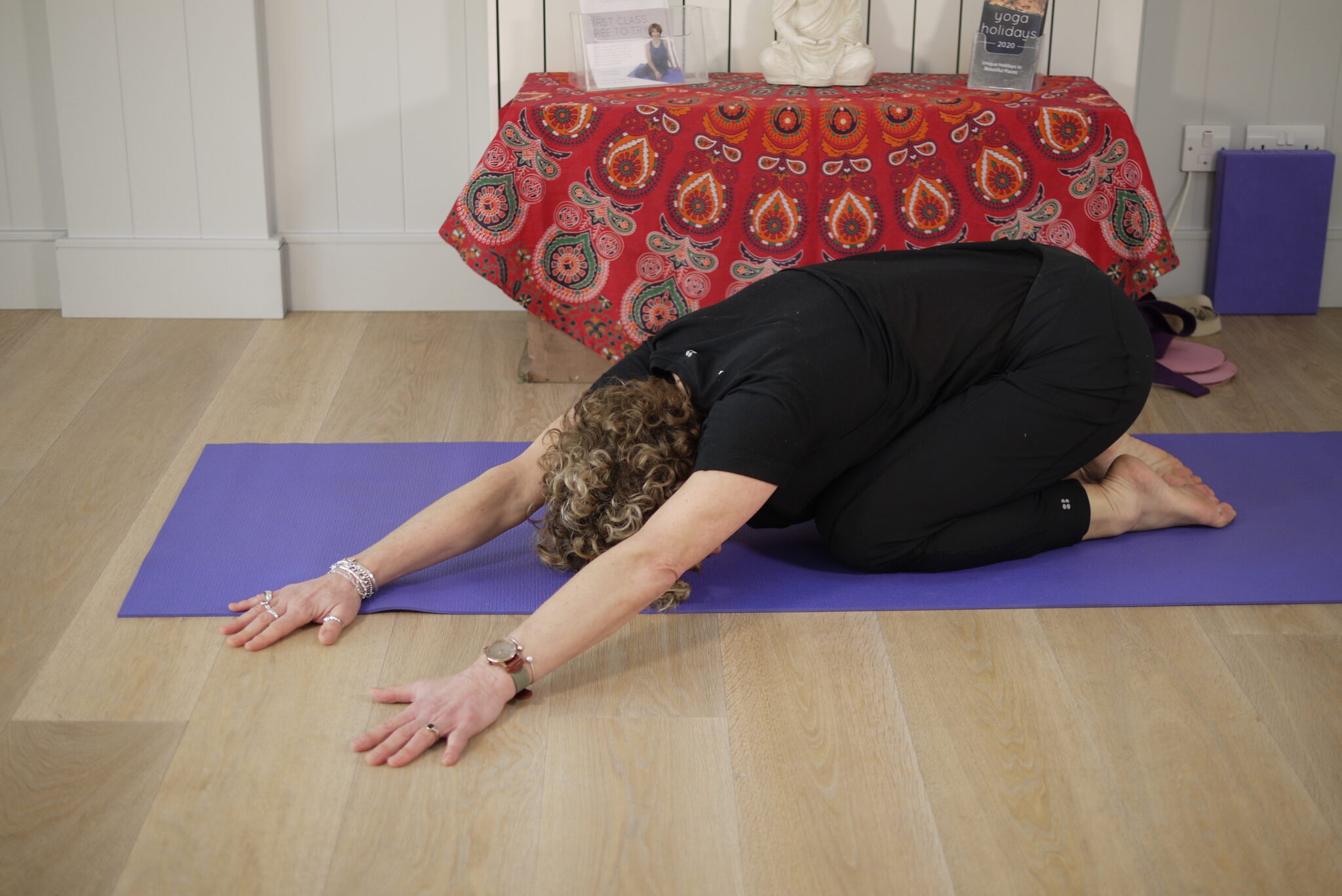
Lateral Stretch From Extended Child Pose (Adho Muka Virasana)
The pose: As above and take right arm out to the right-hand side with left hand on top and head between extended arms. Feel a big stretch down the left side. Hold for 10 breaths and repeat on the other side.
The benefits: Releases discomfort and stiffness in the lower back.
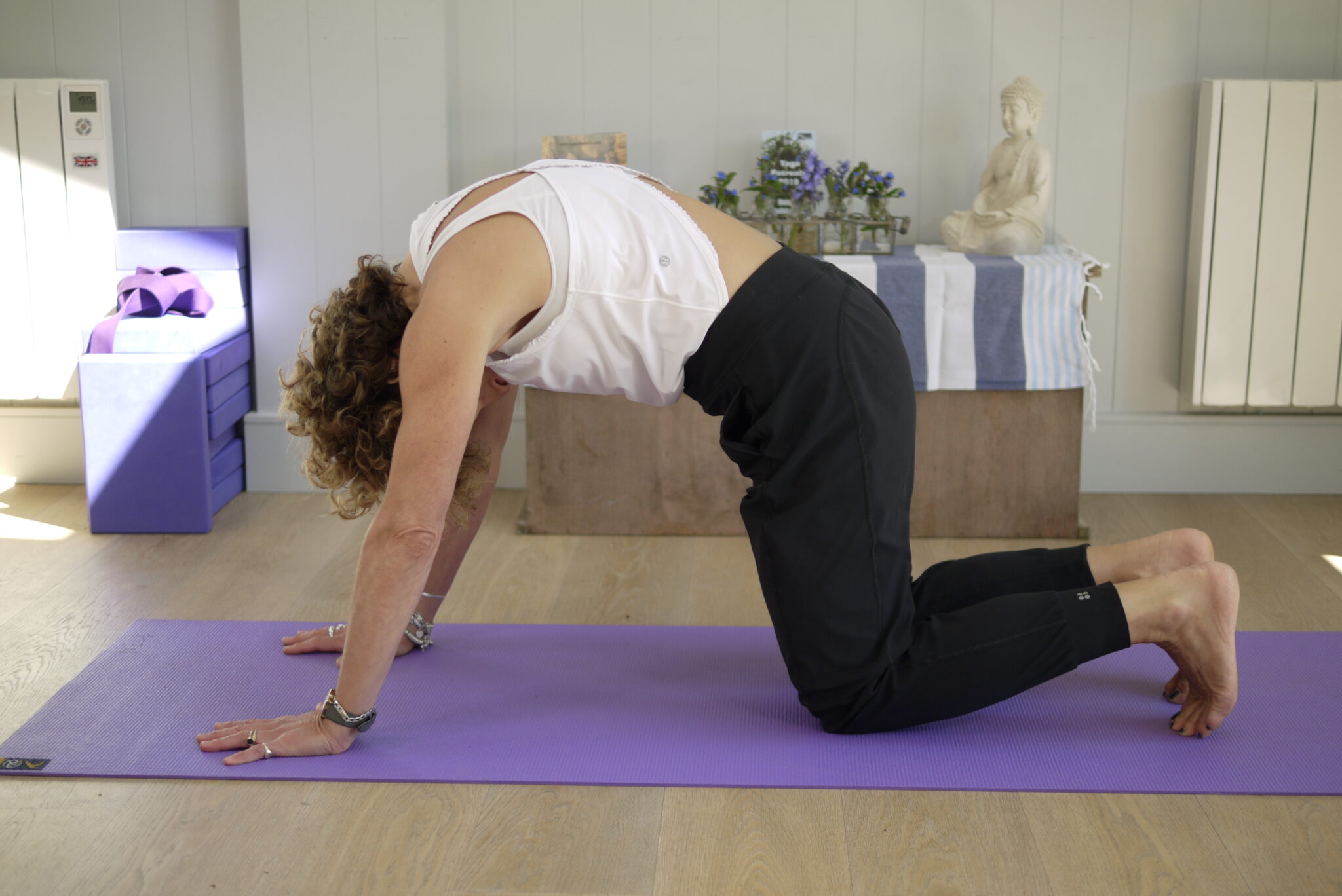
Cat (Marjaryasana) / Cow (Bitilasana)
The pose: Position yourself on all fours. Breathe in and draw the shoulders away from the ears and lift the tail bone to the ceiling while keeping strength and stability through the abdominal muscles. Look up at the ceiling. Breathe out and tuck the chin towards the collar bone, the tummy lifts up towards the spine and the tailbone moves towards the nose.
The benefits: This combination of postures brings flexibility and mobility to the spine and helps co-ordinate movement and breath together. They are especially restorative in the upper back, neck, shoulders and lumbar spine. This sequence also massages and stimulate organs in the abdominal area like the kidneys and adrenal glands.
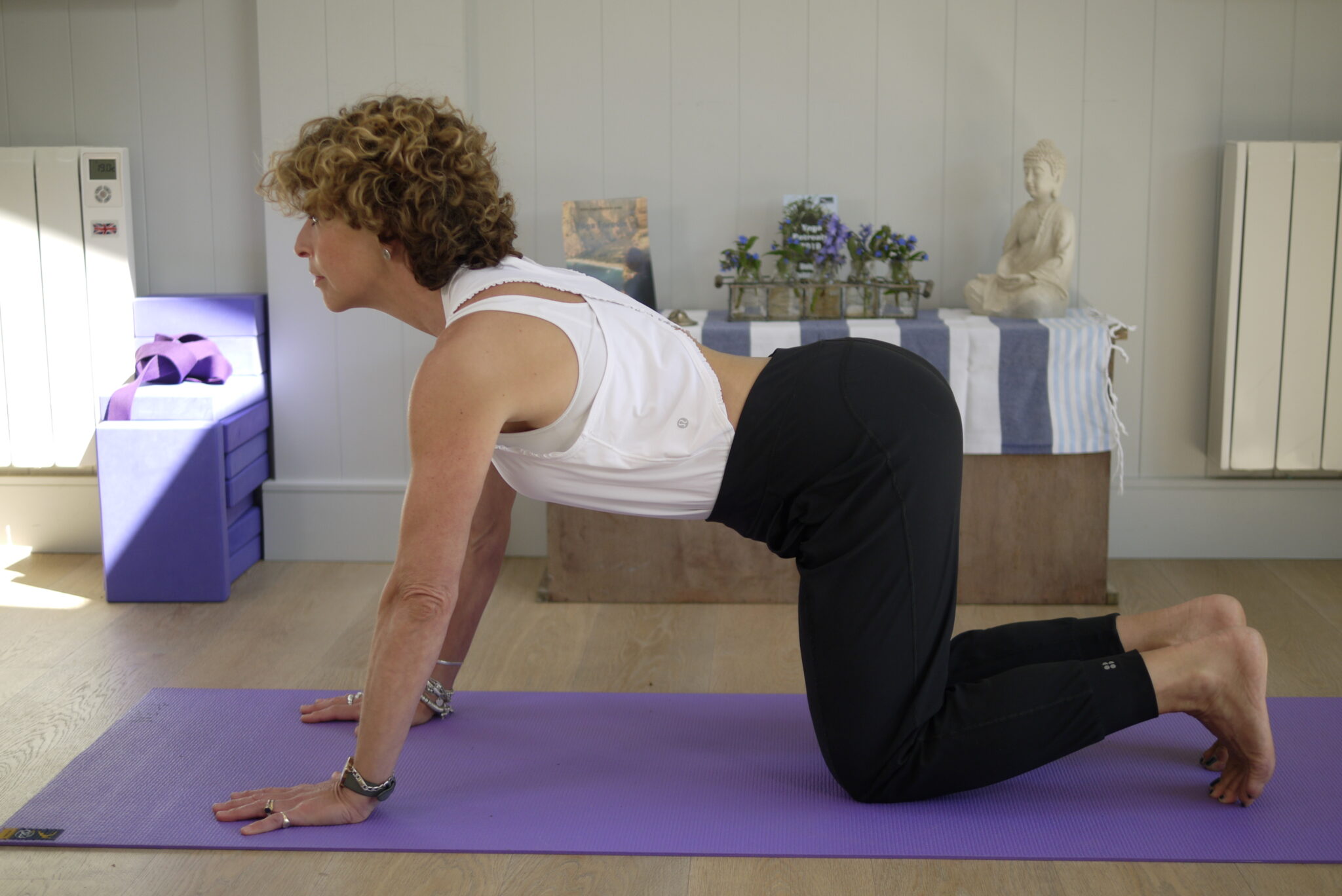
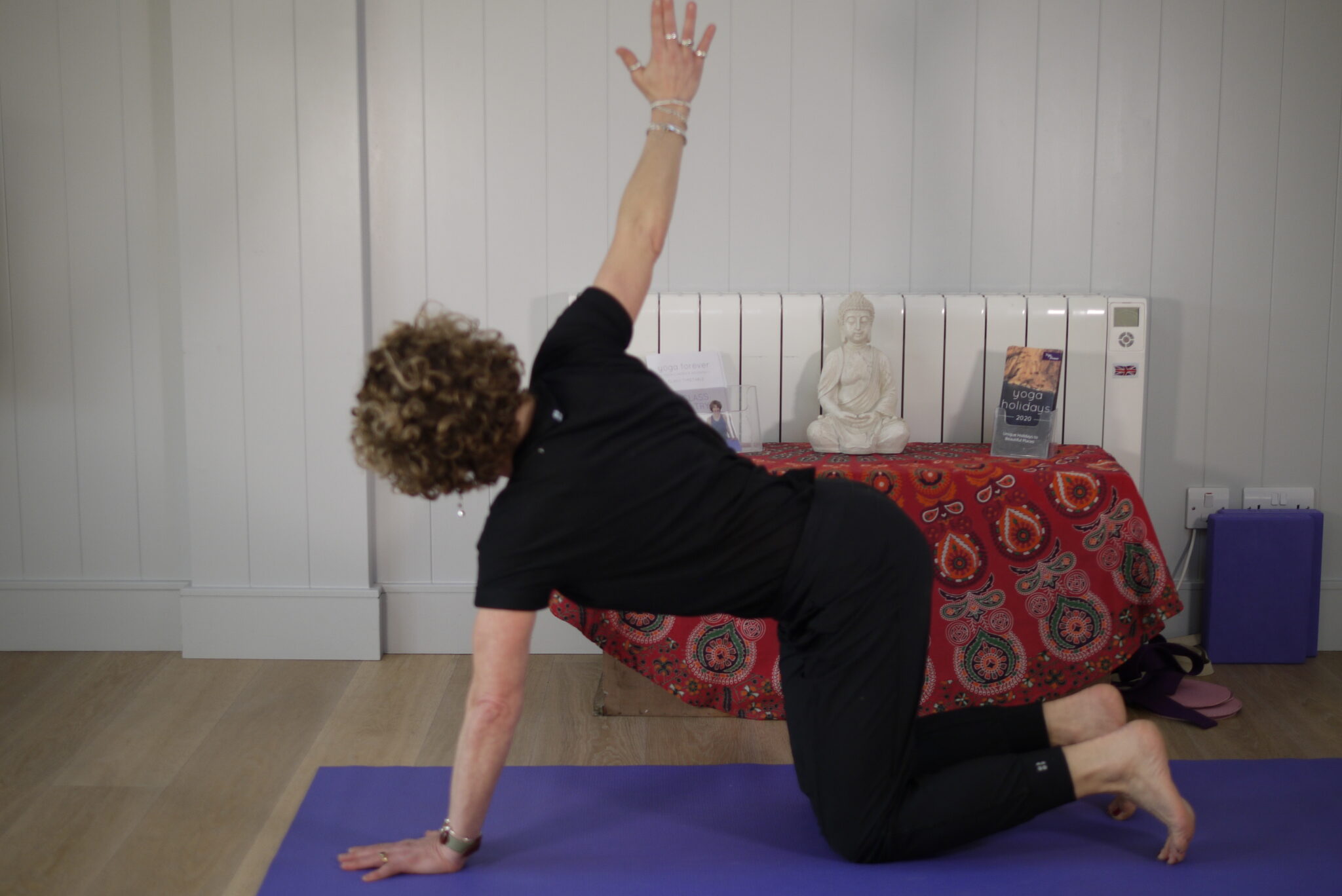
Thread the Needle (Parsva Balasana)
The pose: From all fours, press down into the left hand and raise the right arm to the ceiling. Feed the right hand behind the left wrist or rest on the right elbow as you turn to look up at left hand.
The benefits: Gently compresses the muscles of the upper chest and releases the upper and outer muscles of your shoulder while bringing fresh blood to the upper extremities. Hold for five breaths.
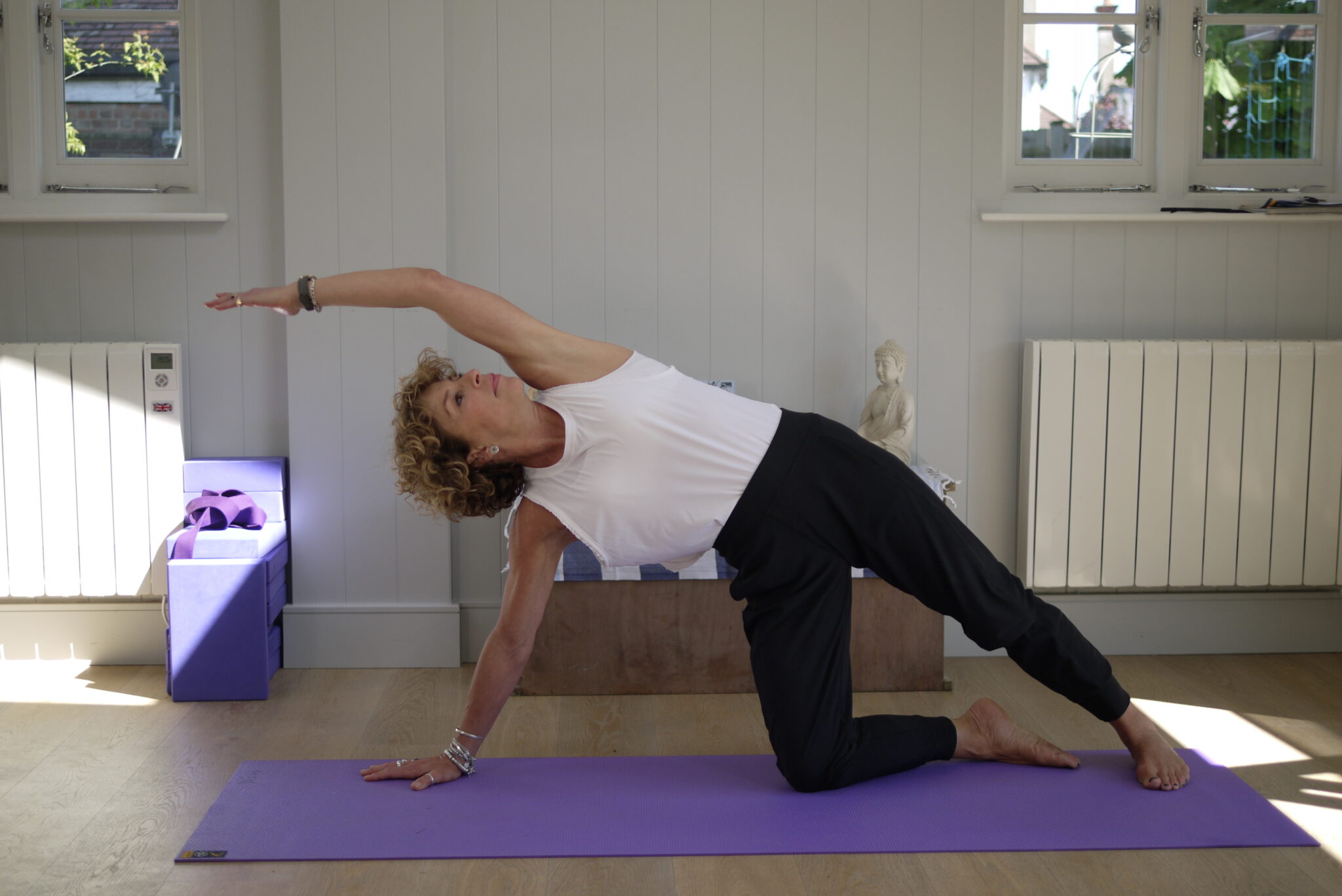
Lateral Stretch
The pose: Take the right foot to the back of your mat and turn it out to the right, aware of lifting the in-step and pushing to the little toe side of the right foot. Extend right arm up to the ceiling and then extend right arm over the right ear, turning the palm to the left to deepen the stretch. Try and contract the right rib cage to create space and length down the left side of the body.
The benefits: Lateral flexion postures like this lengthen the muscles between the ribs and pelvis as well as parts of the lower back, while improving mobility of the rib cage and lung capacity. Hold for five breaths.
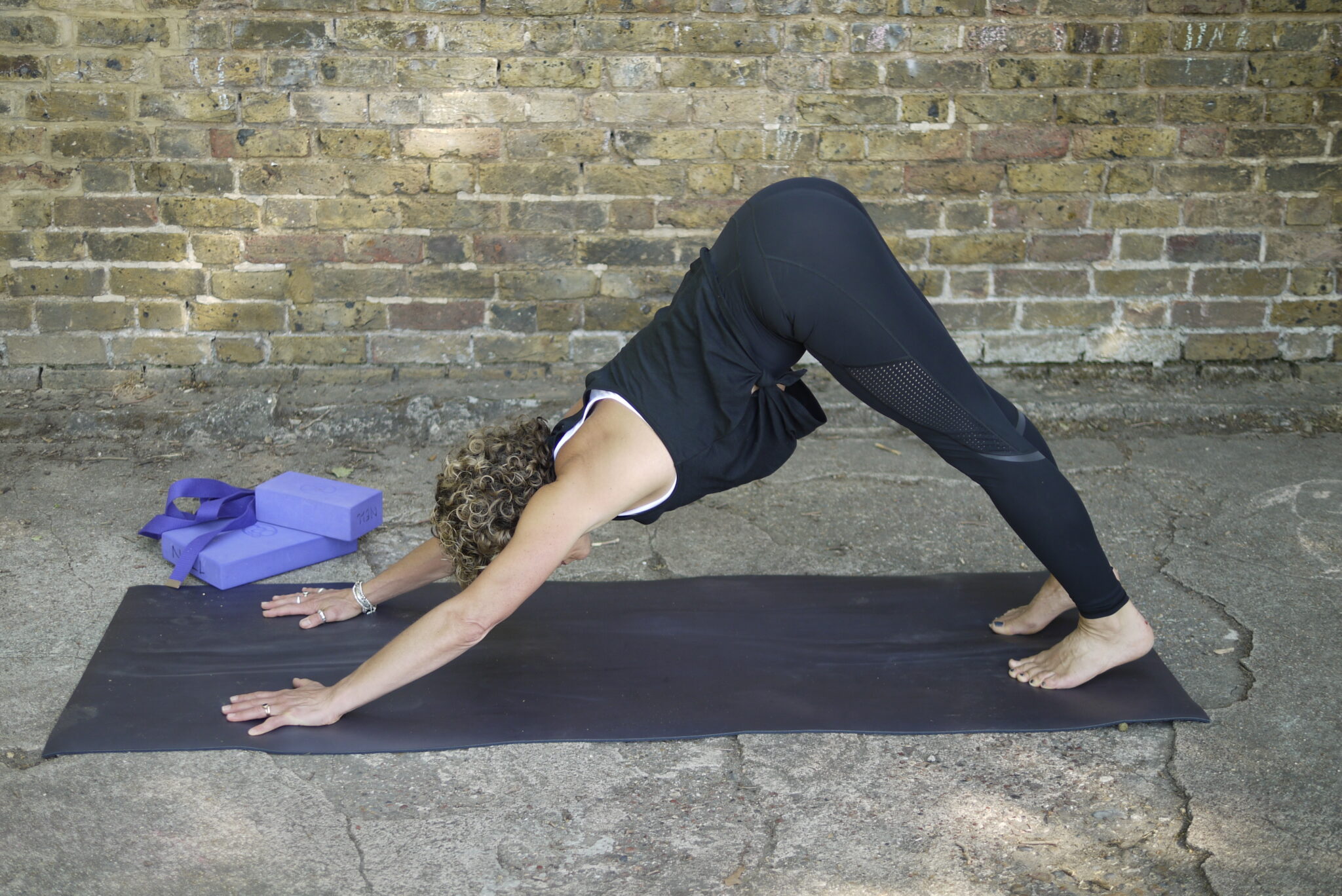
Downward Facing Dog (Adho Muka Svanasana)
The pose: From all fours, ensure that hands are aligned under the shoulders and knees under the hips. Spread out the fingers and find space between the ears and shoulders by drawing the shoulders back and down. Feel length through the spine. Breathe in and on the out-breath, curl your toes underneath you, lift your knees away from the floor, push the thighs up and back and draw your heels down towards the floor. Ensure that the outer arms are strong and the connection down into the hands, knuckles and fingers is good.
The benefits: This posture, whilst challenging, can be very restorative and energising to the body, as it builds strength in the arms. It can also improve a sluggish digestion following long periods of inactivity as well as being very good for insomnia. Hold for 10 breaths or more.
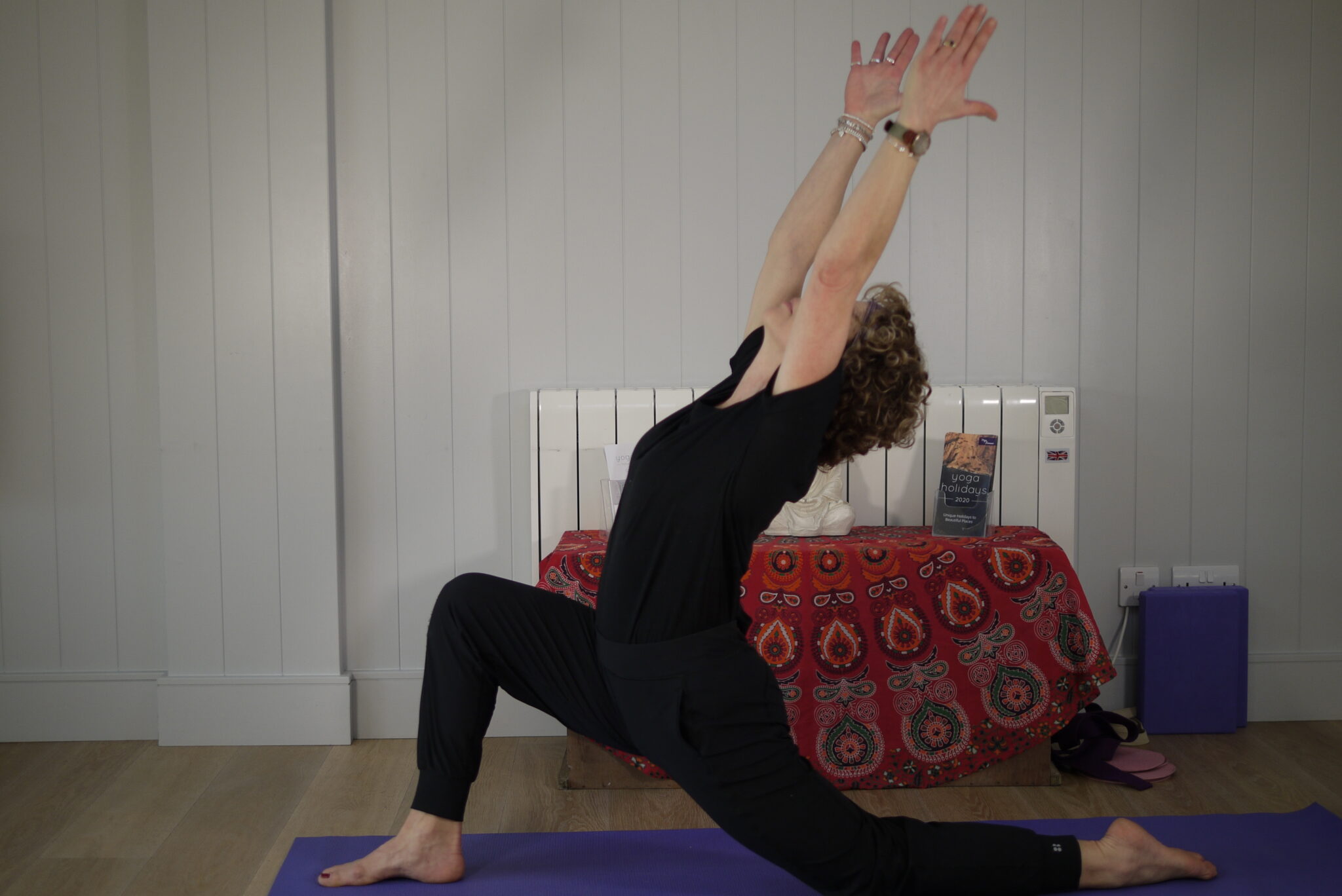
Low Lunge (Anjaneyasana)
The pose: Raise right heel to the ceiling and straighten both legs pushing extended heel away from you and keep toes pointing towards the floor. Draw left heel down to the floor. Drop on to the left knee and step right foot forward between the hands ensuring that your right knee aligns with the right ankle. Engage the muscles of the left buttock to further lengthen the hip flexors and take arms in line with the shoulders and forearms vertical to the floor.
The benefits: Helps to lengthen the hip flexors, which improves stability in the pelvis and stretches the psoas muscle which is important in reducing lower back pain. Hold for five breaths.
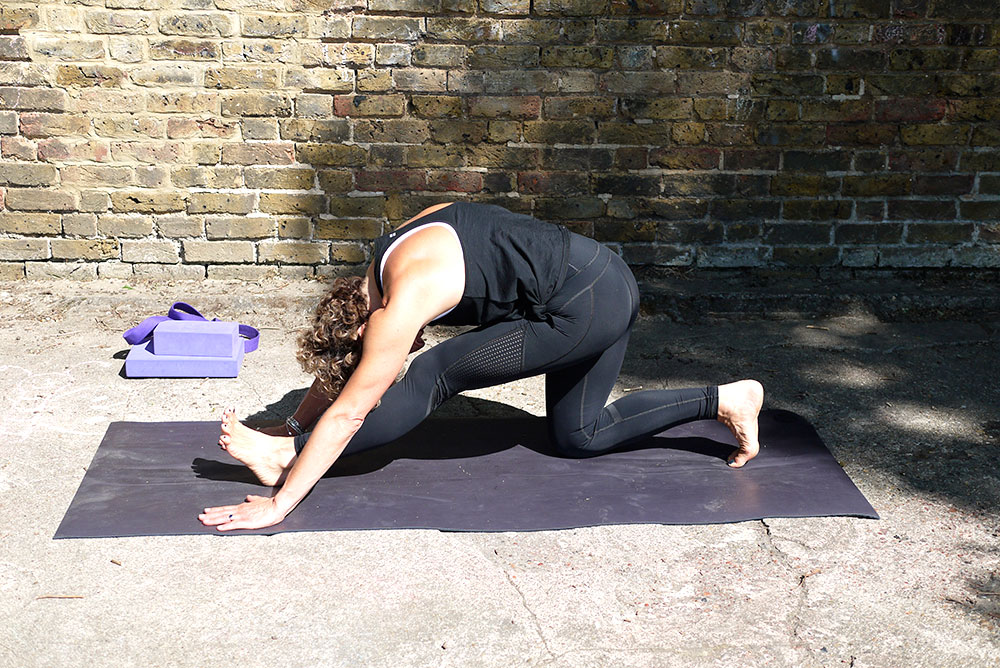
Half Splits (Ardha Hanuman)
The pose: From low lunge straighten the right leg as comfortably as you can, but try and keep the chest as close to the thigh as possible to protect the lower back. To increase the release in the hamstrings and calves, wave the leg gently from side to side.
The benefits: Releases tension in the hamstrings, calves and tightness in the lower back. Can help to relieve sciatic pain. Hold for five breaths.
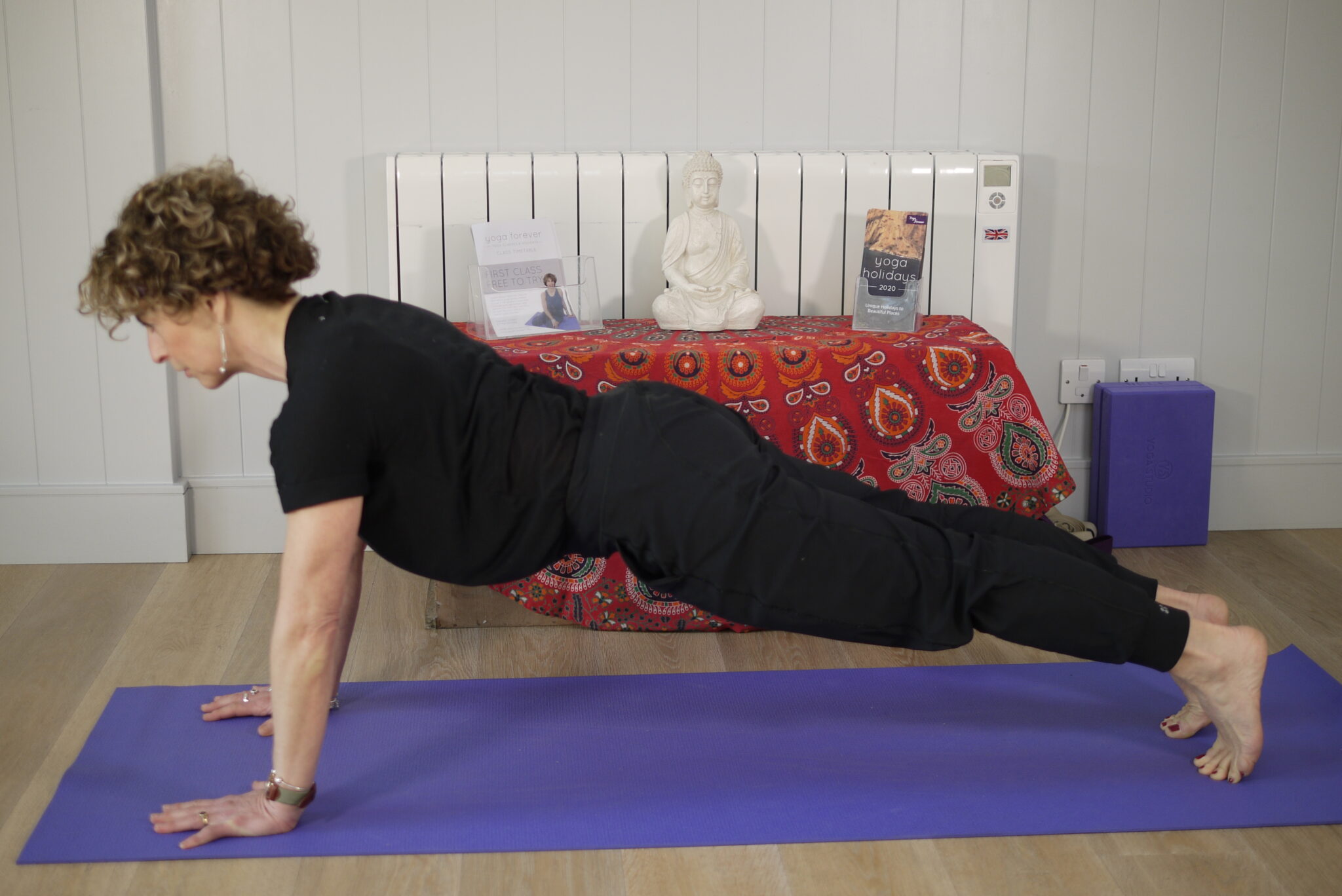
Plank (Uttihita Haturagna Dandasana)
The pose: Place palms under shoulders and extend the legs. Visualise yourself as a ‘ramp’ rather than a ‘hill’ in profile! Press down into the heels of the hands and extend fingers away. Root down into the toes and create strength in the legs and through the abdomen as the shoulders are drawn back and down.
The benefits: Plank is one of the best exercises for core conditioning and it also works your glutes (the largest muscle group in the body) and hamstrings. The posture helps to improve posture and balance. Hold for five breaths.
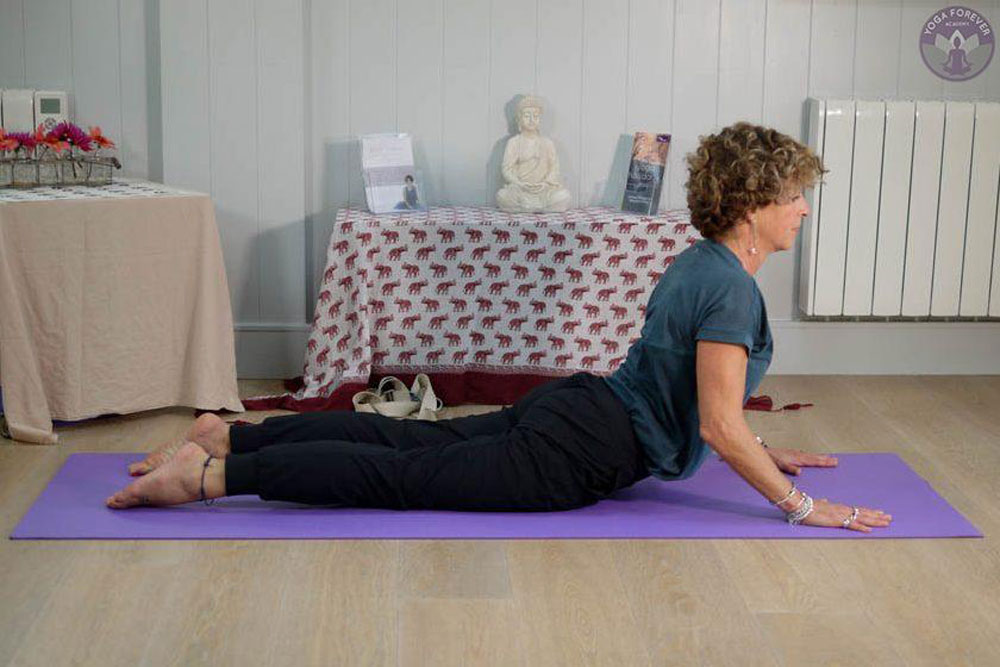
Cobra (Bhujangasana)
The pose: Lying on the abdomen, stretch feet away and place hands under the shoulders or ahead of the shoulders if upper back is very stiff. Breathe in and on the exhale, press down into the hands and using the strength from the back muscles, elevate the body away from the floor with as little use of the hands or arms as possible. Keep elbows bent and draw shoulders back and down.
The benefits: Strengthens the glutes or buttock muscles, increases flexibility in the spine, arms and lower back. Releases tension in the shoulders and helps to expand the chest and stretch the pectoral muscles. Hold for five breaths.
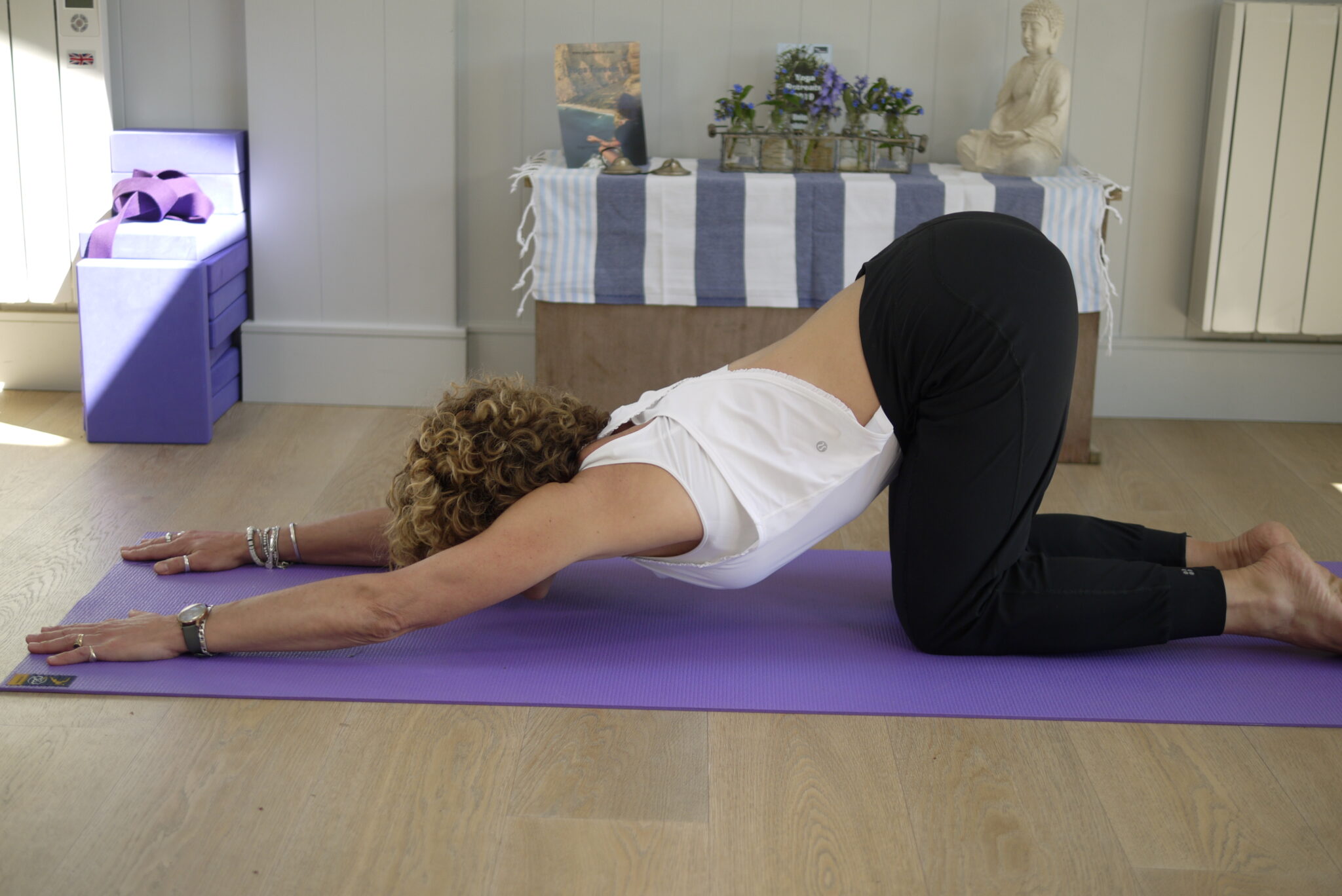
Extended Puppy Pose (Uttana Shishosana)
The pose: From all fours, ensure hips are over knees and remain there as you extend your arms forward in front of you and take your forehead to the floor. For a more dynamic stretch, vary between chin and forehand. If you struggle to get your forehead on the floor, rest it on a rolled up towel or blanket.
The benefits: Releases tension through the upper back and shoulders. Hold for 6-10 breaths.
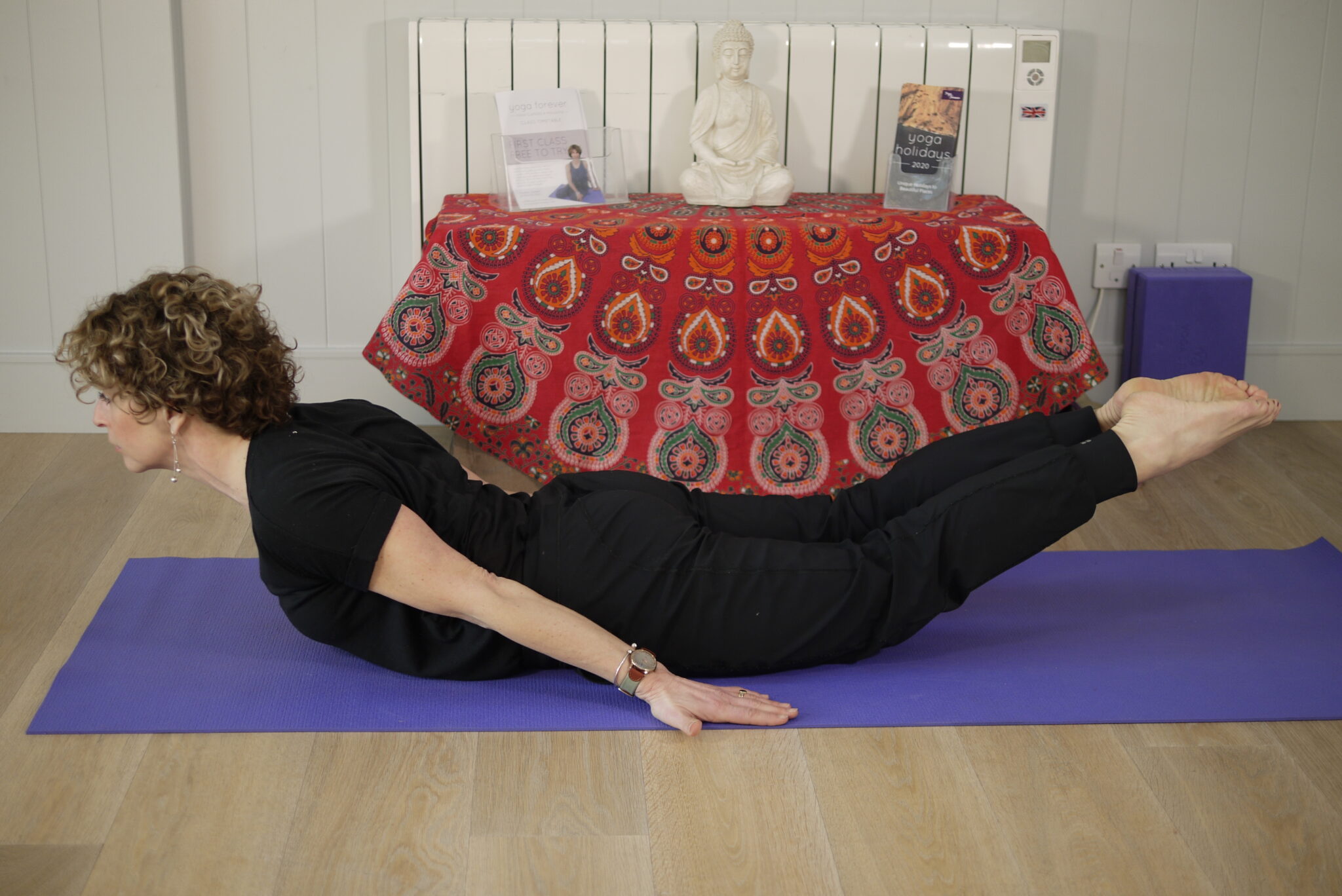
Locust (Salabhasana)
The pose: Lying on your stomach, interlace the fingers behind your back and draw upper arms towards each other to externally rotate the shoulders back and down. Squeeze the thighs and raise the arms away from the body to lift the torso away from the floor.
The benefits: Strengthens the muscles of the spine, glutes, backs of the arms and the legs. Improves posture and stimulates the abdominal and digestive organs. Hold for five breaths.
Return to Cat/Cow and repeat on the left side.
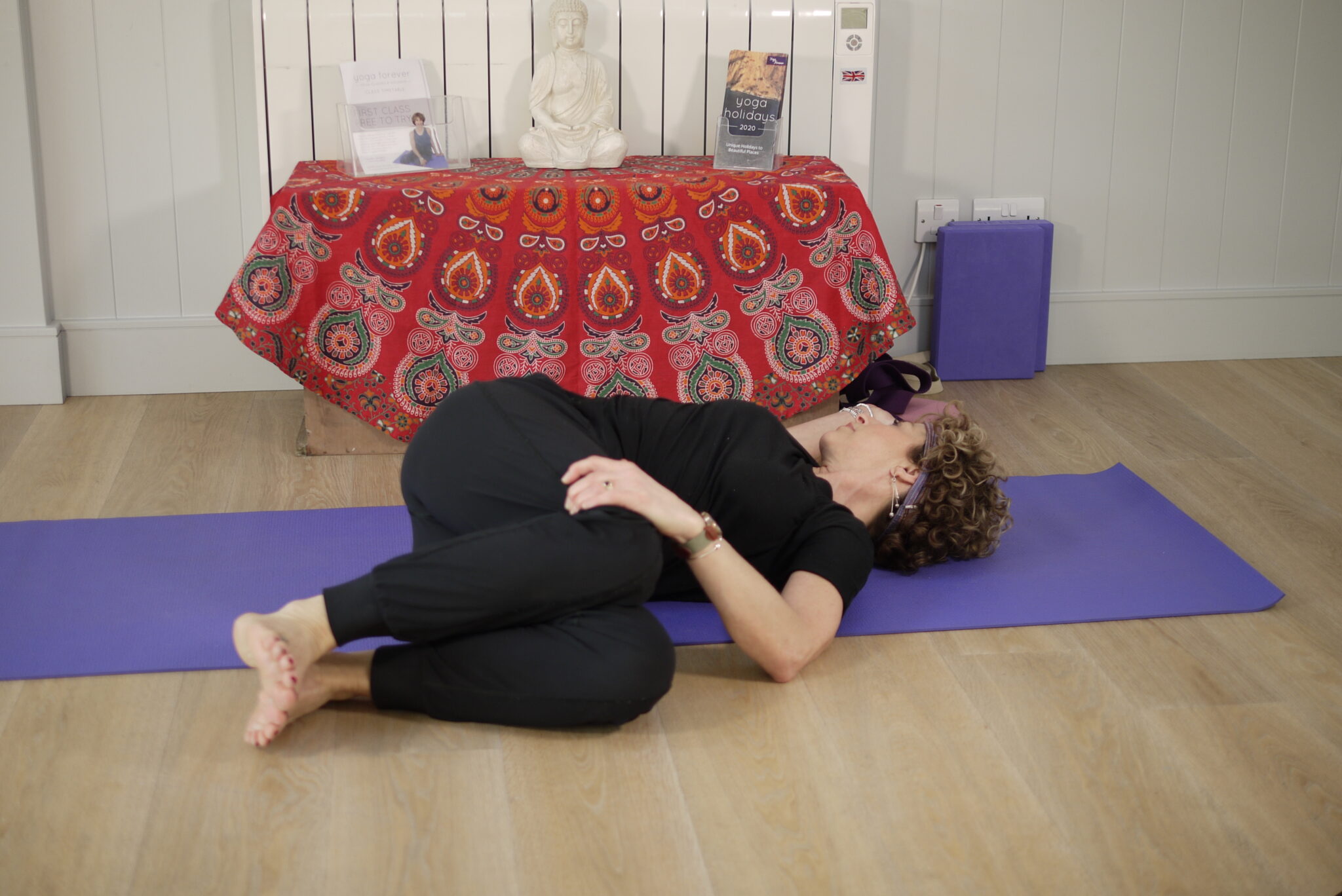
Lying Twist (Jathara Parivartaranasana)
The pose: Lying on the back with knees bent and feet together. Shift the pelvis slightly to the left and allow knees to drop over to the right. Arms can be out to the side in line with the shoulders or to deepen the pose, they can be interlaced under the head to further open through the shoulders and pectoral muscles. To increase the twist further the knees can be brought higher up towards the arms.
The benefits: Helps to develop flexibility in the spine and back muscles. Improves digestive function, calms the mind and supports the parasympathetic nervous system, reducing symptoms of stress and anxiety. Hold for eight breaths. Repeat on the other side.
Following this winter warming practice, lie on your back with eyes closed and with knees bent or legs extending away, with feet wide apart. Stay for 1-2 minutes listening to the gentle movement of the breath and allowing thoughts to drift by without the need to acknowledge them. Complete the session with a long stretch, turn on to the right side and come up to sitting with legs crossed and keep eyes closed for a few moments to enjoy the benefits of your yoga practice.

